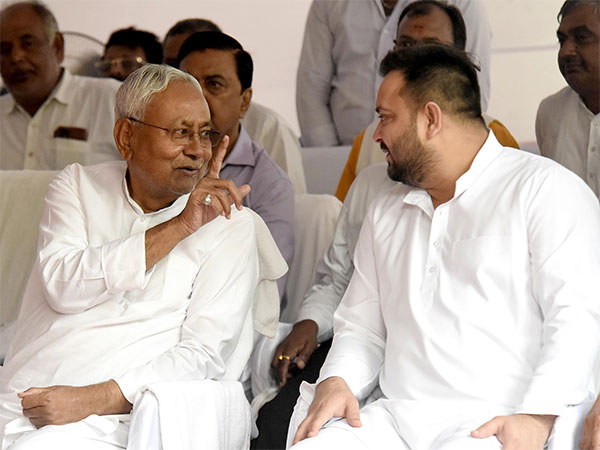
By Dr. Gyan Pathak
Bihar Caste Census Report released on October 2 has exposed the weaknesses of the BJP’s so called social engineering which the party needs to reset urgently before the Lok Sabha election 2024. Caste Dynamics from now onward may change BJP’s political prospects in Bihar, and is likely to escalate in other states too with the demand of more reservation for OBCs, in governance and in politics.
Now the caste census has put the population of OBCs at 63.1 per cent out of them BCs 27.1 per cent are OBCs and 36 per cent are EBCs. People in general categories are 15.5 per cent, Scheduled Tribes 1.7 per cent and Scheduled Castes 19.7 per cent. Obviously, OBCs will be demanding more reservation and political space in the state since they have more population than any other communities but are suffering from social injustices with less reservation and space than they deserve.
To understand the political space for all the communities we just need to see the population of various communities. Yadav, Kushwaha, Kurmi, and Bania form the Backward Classes in Bihar. Yadav are 14.26 per cent, Kushwaha 4.21 per cent, Kurmi 2.87 per cent, and Bania 2.31 per cent.
All these communities have occupied more political space than the Extremely Backward Classes in the state which are Kevart 0.2 per cent, Kevat 0.71 per cent, Mallah 2.6 per cent, Teli 2.81 per cent, Nai 1.59 per cent, Dhanuk, 2.13 per cent, Gangota 0.4 per cent, Chandravanshi (Kahar) 1.64 per cent, Noni 1.91 per cent, Prajapati (Kumhar) 1.40 per cent, Badhai 1.45 per cent, and Bind 0.98 per cent. Each of the community will demand for their rightful political space in every political party.
Many of these EBC communities had been aligned chiefly with the BJP in the name of Hindu, while they have not been given their proper political representation within the party. These communities had been feeling neglected by even JD(U) and RJD, who had larger support base among the four Backward Classess. Yadavas were dominantly with RJD while and Kushwaha, Kurmi, and Bania are largely with JD(U). A large section of Kushwaha were aligned with NDA with its leader Upendra Kushwaha.
Within Scheduled Caste – Chamar, Mochi, Ravidas, and Charmkar are 5.25 per cent; Dusadh, Dhari, and Darahi are 5.31 per cent; Mushahar are 3.08 per cent; Pasi are 0.98 per cent; and Mehtar are 0.19 per cent. BSP has considerable support among the Chamar, Mochi, Ravidas, and Charmkar who form 5.25 per cent of the electorate. Pasi’s are chiefly with LJP. Other communities more or less feel neglected, though, some of the leaders have been with BJP or with their leaders in NDA.
In General, unreserved category, Brahmin are 3.65 per cent, Rajput 3.45 per cent, Bhumihar 2.87 per cent and Kayastha 0.60 per cent. These have more political representation in various political parties than their share in the state’s population.
Now, when the exact population share is known, every community would demand fair political space in the parties they support. It would create problem to every political party, and ultimately, the caste dynamics would change the politics in Bihar, which may trigger similar exercise in other states too. Here the BJP would have to deal with very difficult problems.
For example, the Brahmin, Rajput, Bhumihar and Kayastha has occupied disproportionate political space in the BJP within general category and also in respect of others from OBC, EBCs, STs, and SCs. All these four category politicians would have make rooms for other communities, which will be their loss. Additionally, these four communities have also been trying to make themselves dominant in general category, and hence would not be easily ready to lose. Many leaders of general categories are also with other political parties and the same would apply to all. For example, we have recently seen the class between Rajput/Thakur vs Brahmin leadership when Majoj Kumar Jha of RJD recited a poem “Thakur kakuan”. Rajput leader Anand Mohan has also set the stage for potential clash between Rajputs and Brahmins.
BJP will have tough time to reset its social engineering and the suitable policies not only in Bihar but also in other states. Bihar BJP chief Samrat Chaudhary’s statement is indicative of that when he said, “We will first study and analyze the details of the caste-based headcounts, and then make our statement on policy perspectives”.
There is also a possibility that the Central BJP leadership may act on Rohini Commission’s recommendation regarding equitable allocation of reservation quotas among backward castes and EBCs in Central government.
BJP will have to initiate some other steps for resetting its social engineering in Bihar and across the country since, all efforts of mentioning Muslims in the country by BJP leaders including PM Narendra Modi to polarized Hindu votes in their favour seem not working. In case of Bihar, BJP has also said that JD(U) and RJD governments in the past had included upper caste Muslims in the EBCs, and therefore the Caste Census report of Bihar is faulty. It also has failed in winning OBC sympathies towards BJP.
As the BJP stands today, it would need to rework its social engineering, in Bihar and elsewhere, in the light of Bihar Caste Census and the aftermath. The party that was once known as the party of Brahmins and Banias, had extended their support base to Caste Hindus, ie general category people, and then accommodated many OBC leaders under Hindutva politics to upset the OBC politics of social justice, in now in need of next level of social engineering in Bihar and across the country before the Lok Sabah polls 2024. (IPA Service)
The post Bihar Caste Census Report Has Exposed BJP’s Political Faultlines first appeared on Latest India news, analysis and reports on IPA Newspack.


